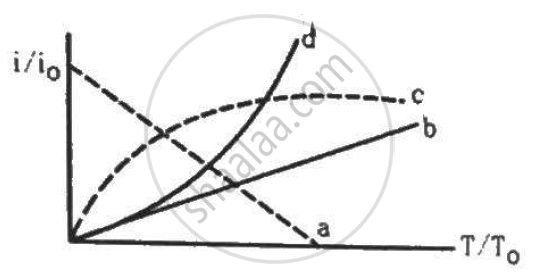Advertisements
Advertisements
प्रश्न
Quarks inside protons and neutrons are thought to carry fractional charges [(+2/3)e; (–1/3)e]. Why do they not show up in Millikan’s oil-drop experiment?
उत्तर
Quarks inside protons and neutrons carry fractional charges. This is because nuclear force increases extremely if they are pulled apart. Therefore, fractional charges may exist in nature; observable charges are still the integral multiple of an electrical charge.
APPEARS IN
संबंधित प्रश्न
Find the maximum frequency of X-rays produced by 30 kV electrons.
The work function of caesium metal is 2.14 eV. When light of frequency 6 × 1014 Hz is incident on the metal surface, photoemission of electrons occurs. What is the
(a) maximum kinetic energy of the emitted electrons,
(b) Stopping potential, and
(c) maximum speed of the emitted photoelectrons?
Why should gases be insulators at ordinary pressures and start conducting at very low pressures?
How will the thermionic current vary if the filament current is increased?
Would you prefer a material with a high melting point or a low melting point to be used as a cathode in a diode?
Would you prefer a material with a high work-function or a low work-function to be used as a cathode in a diode?
An isolated metal sphere is heated to a high temperature. Will it become positively charged due to thermionic emission?
Why does thermionic emission not take place in non-conductors?
The cathode of a diode valve is replaced by another cathode of double the surface area. Keeping the voltage and temperature conditions the same, will the place current decrease, increase or remain the same?
Let i0 be the thermionic current from a metal surface when the absolute temperature of the surface is T0. The temperature is slowly increased and the thermionic current is measured as a function of temperature. Which of the following plots may represent the variation in (i/i0) against (T/T0)?

The anode of a thermionic diode is connected to the negative terminal of a battery and the cathode to its positive terminal.
Answer the following question.
Define the term "Threshold frequency", in the context of photoelectric emission.
The work function of aluminum is 4⋅2 eV. If two photons each of energy 2⋅5 eV are incident on its surface, will the emission of electrons take place? Justify your answer.
If a light of wavelength 330 nm is incident on a metal with work function 3.55 eV, the electrons are emitted. Then the wavelength of the wave associated with the emitted electron is (Take h = 6.6 × 10–34 Js)
Emission of electrons by the absorption of heat energy is called ____________ emission.
Why do metals have a large number of free electrons?
Define the work function of a metal. Give its unit.
What do you mean by electron emission? Explain briefly various methods of electron emission.
In which case is electron emission from a metal not known?
Photoelectric emission is observed from a metallic surface for frequencies ν1 and ν2 of the incident light (ν1 > ν2). If the maximum value of kinetic energy of the photoelectrons emitted in the two cases are in the ration 1 : n then the threshold frequency of the metallic surface is ______.
